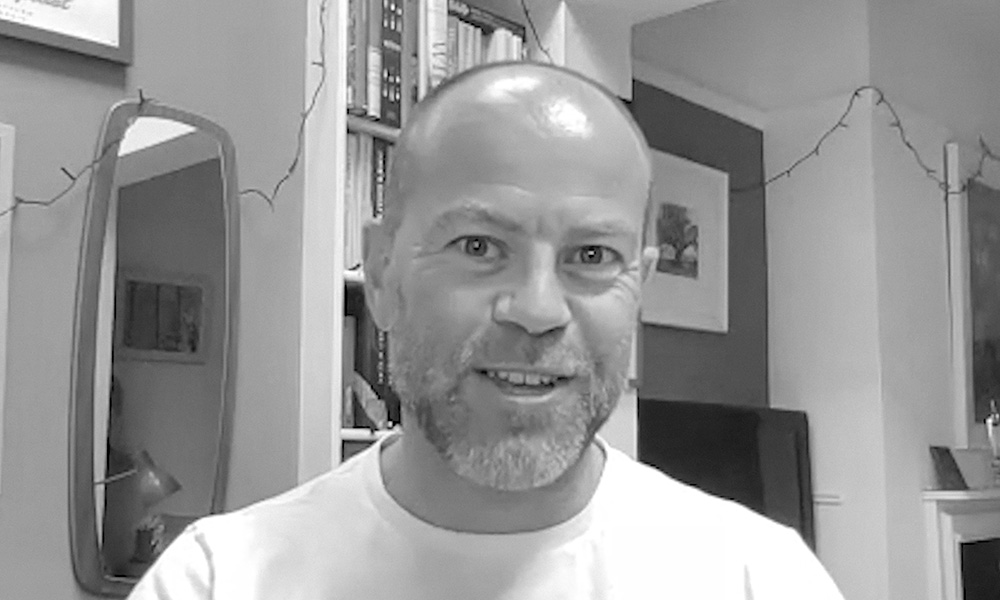56 results
The New Chief Experience Officer is an Applied Behavioral Scientist
In uncertain times, customer needs and priorities inevitably shift and evolve in ways that can induce even more uncertainty for CX teams. Creating a customer experience strategy capable of responding effectively to such changes is vital – and in order to do that, a scientific approach that focuses on behavior first is key.
CXDesign & UXDesign thinkingStrategyWorking practicesDigital Transformation in the Consumer Goods Industry
When it comes to consumer goods, standards are exactingly high across the industry, and processes are often complex. Digital transformation across multiple vectors – from logistics to packaging to quality control – can both revolutionize efficiency and ensure that the highest standards are met.
Breakthrough technologiesCXOperational agilityWorking practicesLeading with Empathy: How to Build High Impact Teams
In the wake of a pandemic that has reshaped countless aspects of life as we once knew it, it is clear that many of the ‘old models’ – of working, corporate culture, and especially leadership – are no longer fit for purpose. In this new landscape, where many of us have re-assessed our priorities and are taking care to focus more on our well-being, one leadership quality is more impactful than all others in maintaining employee engagement: empathy.
Operational agilityStrategyTeam dynamicWorking practicesAgility in Uncertainty: Surfing the Waves, Reaping the Rewards
For an enterprise to grow in uncertain times, it requires strategic approaches that are focused on seamless transformation – while deftly managing the gap between strategic intent and real-world implementation. This means using the right models and having the right people, because both need to align to ensure relevant and scalable transformation.
Operational agilityOperational excellenceStrategyTeam dynamicWorking practicesThe Race is On to Drive Drama Out of Digital
Amid today’s widespread economic turbulence and uncertainty across global markets, businesses are under pressure to build and maintain organizational resilience through digital transformation. But how should they do this without getting swept up in the drama of external disruption?
Data strategy & BIOrganisational designStrategyWorking practicesHow to Make the New, Hyper-Connected World of Work Work for Everyone
Successful leadership in today’s world of hybrid work requires a reset in how we manage and empower our teams. What we have lost to remote work – those watercooler moments – must be reinstated. Leaders should focus on facilitating social connections and creating a fertile breeding ground for innovation by establishing the structures for employees to network and collaborate across boundaries.
EXHybrid workingOperational agilityShaping cultureStrategyWorking practicesWorkforce Transformation: An Employee Perspective
As we all adjust to post-Covid life, companies are reassessing their workplace processes and procedures – figuring out what’s working, what isn’t, and what the future holds. How can companies establish the foundations that allow them to fully realize employee potential in a hybrid working world?
CXEmployee wellbeingEXHybrid workingWorking practicesNew Work: Is the Great Resignation Finally Making Us Think Differently?
Few companies have fully grasped the reality of today’s New Work challenges. The majority seem content to wait and see – but this complacency could mean the difference between moving ahead and lagging behind. There is a lot at stake, and to make a success of the new world of work leaders need to move on from technology and team leadership and focus on strategy at a higher level.
Hybrid workingShaping cultureStrategyTalent managementWorking practicesEffective Change Management for a Resilient Workforce
Change management ensures organizations can implement new ways of working, new technologies and new methodologies – as well as cultural and mindset changes – without losing employee traction and engagement. This vital element of project delivery keeps people and productivity on side while shifting business foundations towards the future.
EXHybrid workingOperational agilityOperational excellenceTeam dynamicWorking practicesThe Future of the Workforce Is Here, Are You Ready?
With so much upheaval to the work environment in just a few years, our expectations of and relationship with work have changed completely. How can organizations prepare for these shifts as employees set new boundaries and seek purpose at work?
Post-Covid workplacePurposeWorking practicesHow Automation Will Unlock the Next Level of Human Performance
When so much is changing in our day-to-day personal and professional lives, organizations need to make sure they are adjusting to the new demands of work whilst being sensitive and supportive of their workers. Automation allows employees to engage in creative, exciting, rewarding endeavors that lead to elevated career and personal satisfaction – as well as delivering efficiencies for the business.
AutomationEmployee wellbeingL&DShaping cultureTalent managementWorking practicesTrusting the Human in Our Future
Employees and customers have new expectations of organizations, not just to speak and understand their language, but ultimately to be human – in the decisions that they make, the values they represent, and the way they contribute to human progress. Trust is the driving force of change and value creation; trust gives us the power to reimagine, rethink and reshape our world, environment and professional as well as personal context.
CXEXShaping cultureTrustWorking practicesMisconceptions Around Zero Trust
There are misconceptions around Zero Trust, as businesses may be fearful of a perceived need to completely rebuild their security architecture, but all it takes is a step-by-step approach. What is the journey to making the security of your business airtight?
Data privacyOperational agilitySecurityTrustWorking practicesGender Equality – The New Leadership Advantage
In today’s fast-changing markets, where adaptability is key to success, traditional leadership thinking is too rigid to effectively respond to unexpected events. What’s needed instead at a senior level is a vibrant mix of thought and opinions that can deliver creative solutions to unexpected events. This means that organizations with greater gender balance at the highest level are much better equipped to remain competitive.
Diversity, equity & inclusionEXOrganisational designShaping cultureStrategyTalent managementWorking practicesNTT DATA’s Zero Trust Journey 2: Architecture (and What We’ve Learned)
The zero trust journey is all about taking measures to assure your business security at every level. While it sounds complex, it is more simple than it seems, and is worth every effort to ensure that access to data is only granted to those who have sufficiently proved their identity at every stage necessary.
Data privacyOperational agilitySecurityTrustWorking practicesThree Questions Every CEO Should Ask About Automation
Most descriptions of the role automation plays in an organisation are wrong. Automation is not just about alleviating mundane tasks. It’s tied to the cultural and workplace transformation we’re experiencing today because it’s about enhancing the human experience, both for our customers and our employees.
AutomationStrategyWorking practicesThe Evolution of Buying Habits in Enterprise IT
The way enterprises are buying IT is changing, and so are the characteristics of the buyers. Several big trends are driving this transformation, from the need for agility to different expectations of time to value and the liberating possibilities of the cloud. Now, IT departments can stitch everything together to meet their exact needs much faster than ever before.
Breakthrough technologiesOperational agilityProcurementWorking practicesSmart Learning: The Positive Effects of Digital Training on EX
Many things are shaking up the labour market at the moment, with added pressure to stem the flow of the ‘great resignation’. In our current context, employee experience (EX) is more important than ever. Here’s how organisations can use digital training and smart learning to keep employees happy.
EXHybrid workingTalent managementWorking practicesOvercoming Automation Anxiety
From data privacy to employee job security, there are a number of reasons why businesses might be anxious about automation. NTT DATA looks at how it has helped various health insurance companies overcome their fears and live happily (and profitably) alongside automation.
AutomationHybrid workingWorking practicesAdaptive, Diverse and Cyber-Effective: The Elements of an Intelligent Organisation
We need to rethink the organisation. We must break from the traps of historic convention, stop managing the wrong things and embrace an adaptive synthesis of people, behaviours and processes enabled by effective information. In doing so, intelligent organisations will deliver greater value to all stakeholders.
Organisational designStrategyTeam dynamicWorking practicesWhite Paper: The Big Pivot – From Disruption to Digital Transformation
No industry has been left untouched by the pandemic. Since its onset, companies have been in a constant state of heightened flux: adjusting, recovering or strategising for the future, and all eyes have been on the technology that has helped carry them through. As the economy starts to recover, organisations must pivot to meet any challenge head-on.
Breakthrough technologiesInnovationPost-Covid workplaceWhitepaperWorking practicesThe Future of Work is More Flexible, Greener and Smarter
Smarter and more sustainable workplaces are essential for all businesses as we tentatively emerge from the restrictions of the pandemic. Technology is pivotal in not only providing a seamless user experience but also in building a greener IT strategy.
Breakthrough technologiesPost-Covid workplaceTeam dynamicWorking practicesWorking Without Boundaries and the Enterprise of Tomorrow
Agile organisations are defined by how closely they’ve looked at costs, technology and digital innovation and leveraged these to survive in times of uncertainty. Learning from this approach, businesses can reap the benefits of cultural flexibility, process agility, and operational adaptability – allowing employees to work without boundaries while still achieving benchmarks of productivity.
Hybrid workingOperational agilityTalent managementWorking practicesWhite Paper: How to make Business Agility a reality
Organisations that are focused, resilient, responsive, adaptable, versatile and able to sustainably innovate are successful. Taken together, these traits are known as ‘Business Agility’. The benefits are significant, including better organisational health – the best indicator of long-term performance. Despite this, many organisations struggle, with common challenges holding them back. At NTT DATA, we know it doesn’t have to be this way. This paper assesses the underlying challenges and describes our Business Agility framework to help clients thrive in the years to come.
Operational agilityStrategyWhitepaperWorking practicesWhite Paper: Lessons from the future
The sudden shock of the changes brought about as a result of coronavirus has passed, and we are now settling into what is likely to be a long period of working from home. Our sister companies, particularly NTT DATA Italia, have been coping with this situation for some time already, and we have benefitted from their experience. We would like to share some of what they have discovered.
Post-Covid workplaceShaping cultureTeam dynamicWhitepaperWorking practicesThe Challenge of Continuous Change
Adapt or perish. The rate of change in the post-Covid world is relentless. With the competitor landscape and customer demands changing at speed, the new enterprise must be hyper-adaptive, able to flex and adopt the agile mindset and principles to ultimately achieve competitive advantage and build better relationships with their customers, staff and communities.
Operational agilityShaping cultureStrategyWorking practicesAccelerating Data Insights to Steer Smoothly Through Crisis
Leaders will do well to remember that crises always present opportunities for improvement and advancement. By embracing agility and using data and analytics to their best advantage, leaders will be in a stronger position to navigate through the near-term challenges that the pandemic has raised.
Data strategy & BIOperational agilityWorking practicesBringing Everyone Along: A Model for Maximising Adoption in Change Projects
Change management is an underrated tool in the fight against continual disruption. With a few basic tenets, companies can get a handle on quickly assembling resources – and, crucially, maximising buy-in from the workforce – in response to changing external and internal environments.
EXOperational agilityTeam dynamicWorking practicesThe Third Way: A Paradigm Shift in the Organisational and Social Models of the Workplace
In Italy, an experiment is redefining everything we know about the modern workplace. A ‘zero kilometre’ office, designed to promote relationships that transcend generational and sectoral boundaries - and overcome the conundrum of working safely and effectively in the post-Covid world.
EXOrganisational designPost-Covid workplaceWorking practicesPlay, Build, Innovate: How to Assemble the Future You and our Customers Want
If creativity is the starting point for innovation, then play is the starting point for creativity. But without a connected ecosystem, both in and outside the organisation, great ideas will fail to come to fruition. Harnessing diversity of thought and empowering your workforce with curiosity, passion and collaboration, is how businesses need to behave if they want to become constant innovators.
CreativityInnovationTeam dynamicWorking practicesHow Corporate R&D Makes Innovation Real
Part of the challenge of innovation is dismantling the different ways in which the word is used, and how that comes to life in a business context. Leaders should focus on testing hypotheses through research and development rather than trying to ‘do innovation.’
InnovationStrategyWorking practicesGo to the Edges of the Map
Often, all we need to embrace the unorthodox is the permission to do so. The idea of “the rebel pirate” can give rise to fertile, free-thinking environments, ripe for innovation. Fortune favours the bold, after all.
InnovationShaping cultureTeam dynamicWorking practicesFive lessons learned from the Covid-19 crisis shaping our approach to citizen service delivery
Crises are usually accompanied by a host of challenges to overcome. Vicki Chauhan, Head of Public Sector at NTT DATA UK, is focusing on opportunities for improvement born out of the recent global pandemic.
InnovationPost-Covid workplaceSocial impactWorking practicesBeyond Borders: Innovating in an Interconnected World
As our business, social and natural environments adapt to the shockwaves of the Covid-19 pandemic, never-before-seen collaborations between organisations have brought forth incredible advances in medicine and technology. Such innovations wouldn’t have been possible alone. Looking beyond the perimeter of the company to make strategic external connections is fundamental.
InnovationPartnershipsShaping cultureWorking practicesWhite Paper: Re-Energising Employees to Thrive in a Changing Business
The white paper examines some of the key challenges facing organisations as the digital revolution gathers pace. By understanding the new disruptive environment and connecting people across (and beyond) the workforce, organisations can become more motivated, inventive, adaptable and quick to respond.
EXTalent managementTeam dynamicWhitepaperWorking practices
















































